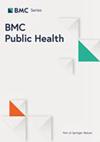Construction and validation of a risk prediction model for soldiers with frostbite in northeast China: a cross-sectional study
IF 3.5
2区 医学
Q1 PUBLIC, ENVIRONMENTAL & OCCUPATIONAL HEALTH
引用次数: 0
Abstract
One of the challenges of physical training in extreme condition is frostbite, especially in Northeast China. In this study, we aimed to construct a risk prediction model for frostbite among soldiers in Northeast China, and verify its effect. 698 participants were selected via convenience sampling from Northeast China from December 2021 to January 2022 (winter). They were randomly divided into a training set (N = 479) and a testing set (N = 202) in a ratio of 7:3. All participants completed a researcher-made questionnaire on frostbite. The prediction model was constructed through the use of Logistic regression analysis, which was used to predict the independent risk factors for frostbite formation and screen significant indicators. The model’s performance was assessed using the receiver operating characteristic (ROC) curve and decision curve analysis (DCA) to evaluate the prediction efficiency and goodness of fit. The incidence of frostbite in the training set was 19.83% (95 people), all of which were first-degree frostbite. Among them, frostbite in multiple parts was the most common (58.95%), followed by singular body parts like hands (24.21%), ears (11.58%) and feet (5.26%). Single factor logistic regression analyses showed that ambient temperature, ambient wind speed, outdoor stationary time, stationary status, and history of frostbite are independent risk factors that affect the occurrence of frostbite. Furthermore, we constructed the frostbite risk prediction model for soldiers in the northeastern region of China. The area under the receiver operating characteristic curve (AUC) for the risk of frostbite in the training set and testing set was 0.816 (95% CI, 0.770 ~ 0.862) and 0.787 (95% CI, 0.713 ~ 0.860), respectively. The Hosmer-Lemeshow test of the model showed χ2 = 11.328 and P = 0.184 (> 0.05). The DCA curve indicated that most of the clinical net benefits of the model are greater than 0, demonstrating good clinical usefulness. The constructed frostbite prediction model can effectively identify soldiers with a higher risk of frostbite. It provided theoretical support for commanders to take preventive measures to reduce the incidence of frostbite among soldiers and was of great clinical guiding significance.中国东北地区士兵冻伤风险预测模型的构建与验证:一项横断面研究
在极端条件下进行体能训练的挑战之一是冻伤,尤其是在中国东北地区。本研究旨在构建东北地区士兵冻伤风险预测模型,并验证其效果。我们于 2021 年 12 月至 2022 年 1 月(冬季)通过便利抽样从中国东北地区选取了 698 名参与者。他们按 7:3 的比例被随机分为训练集(479 人)和测试集(202 人)。所有参与者都填写了一份由研究人员制作的冻伤问卷。预测模型是通过逻辑回归分析建立的,用于预测冻伤形成的独立风险因素和筛选重要指标。利用接收者操作特征曲线(ROC)和决策曲线分析(DCA)对模型的性能进行评估,以评价预测效率和拟合度。训练集中的冻伤发生率为 19.83%(95 人),均为一级冻伤。其中,多部位冻伤最为常见(58.95%),其次是单部位冻伤,如手(24.21%)、耳朵(11.58%)和脚(5.26%)。单因素逻辑回归分析表明,环境温度、环境风速、户外静止时间、静止状态和冻伤史是影响冻伤发生的独立风险因素。此外,我们还构建了东北地区士兵冻伤风险预测模型。训练集和测试集的冻伤风险接受者操作特征曲线下面积(AUC)分别为 0.816(95% CI,0.770 ~ 0.862)和 0.787(95% CI,0.713 ~ 0.860)。模型的 Hosmer-Lemeshow 检验显示 χ2 = 11.328,P = 0.184(> 0.05)。DCA曲线表明,该模型的大部分临床净效益均大于0,显示出良好的临床实用性。所构建的冻伤预测模型能有效识别冻伤风险较高的士兵。为指挥员采取预防措施降低士兵冻伤发生率提供了理论支持,具有重要的临床指导意义。
本文章由计算机程序翻译,如有差异,请以英文原文为准。
求助全文
约1分钟内获得全文
求助全文
来源期刊

BMC Public Health
医学-公共卫生、环境卫生与职业卫生
CiteScore
6.50
自引率
4.40%
发文量
2108
审稿时长
1 months
期刊介绍:
BMC Public Health is an open access, peer-reviewed journal that considers articles on the epidemiology of disease and the understanding of all aspects of public health. The journal has a special focus on the social determinants of health, the environmental, behavioral, and occupational correlates of health and disease, and the impact of health policies, practices and interventions on the community.
 求助内容:
求助内容: 应助结果提醒方式:
应助结果提醒方式:


